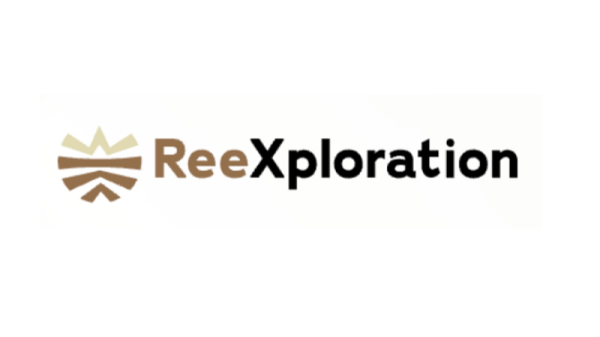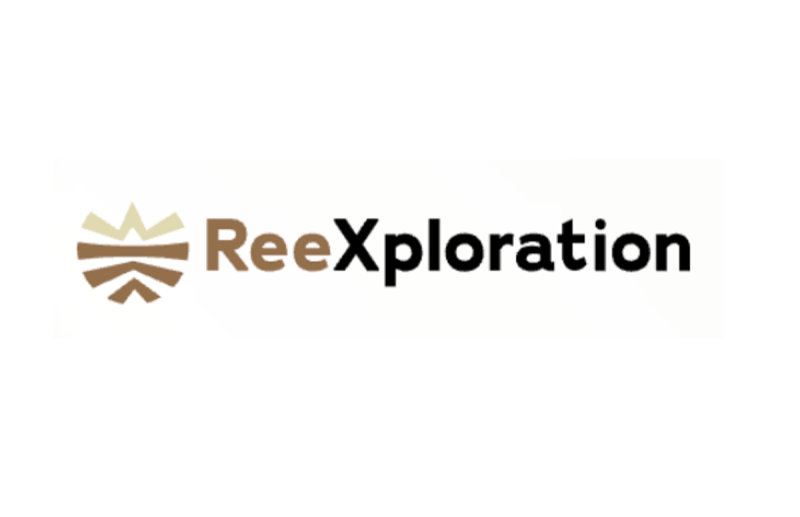Discovery of uranium mineralization in ideal geological setting, supported by regional radiometric anomaly, confirms large Rossing-style target
ReeXploration Inc. (TSXV: REE) (FSE: K2I0) (‘ReeXploration’ or the ‘Company’) is pleased to announce the identification of a significant new uranium exploration target at its Eureka Project (‘Eureka’ or the ‘Project’), located in the Erongo mining district, central Namibia. This new uranium target supports the Company’s broader focus on advancing critical-mineral opportunities in stable, mining-friendly jurisdictions.
HIGHLIGHTS:
- New Large-Scale Uranium Target Identified: Immediately southwest of the Eureka Dome, which hosts the Company’s rare earth element (‘REE’) resource and numerous REE targets.
- Strong Regional Radiometric Anomaly: Airborne data defines a 6.5 x 3.5 km zone characterized by high uranium and low thorium responses.
- Evidence of Widespread Uranium Mineralization: Uranium reported in shallow overburden samples from historical exploration, verified by recent scintillometer readings up to 1,500 counts per second (‘cps’).
- Uranium Discovered in Weathered Leucogranites: Field reconnaissance confirmed elevated uranium in occasionally outcropping leucogranites (‘alaskites’), with portable XRF semiquantitative values up to 853 ppm U.
- Along Trend of Namibia’s ‘Alaskite Alley’: Lies within the same structural corridor that hosts major uranium deposits — Rössing, Husab, Etango, Omaholo, and Norasa — which collectively contain more than 1 billion pounds of U₃O₈.
- Geological Setting Matches Rössing-Style Models: Key discovery criteria evident, including 1) proximity to the Welwitschia Lineament, 2) position on the flanks of a major basement dome, and 3) leucogranites intruded into reactive calc-silicate host rocks.
‘This uranium target, which is almost entirely covered by thin overburden, represents a promising exploration opportunity within one of the world’s most prolific uranium belts,’ commented Tolene Kruger, Senior Geologist for ReeXploration. ‘The geology, structural setting, and early results are consistent with the deposit models that led to the discovery of the major leucogranite-hosted uranium deposits within Namibia.’
Christopher Drysdale, Interim CEO for ReeXploration, added ‘The identification of this new target highlights the strong technical work completed by our exploration team and the expanded potential of the Eureka Project. As we continue to advance with our REE resource growth plan within the Eureka Dome, this extensive target immediately outside the Dome adds significant exploration upside and optionality for our shareholders, in one of the world’s most established critical minerals mining jurisdictions. We are looking forward to advancing exploration on our numerous REE targets and this newly identified uranium target, consistent with our strategy to discover significant critical mineral resources that contribute to secure, responsible supply chains.’
Expanded Discovery Potential – Large-Scale Rössing-Style Target
The identification of this target underscores the exceptional potential of the Eureka Project, which now includes a growing pipeline of REE targets alongside this newly recognized uranium opportunity. Review and field validation of government airborne radiometric data revealed extensive uranium anomalies situated off the southwestern margin of the Eureka Dome, which is host to the Company’s REE mineral resources and exploration targets. The government airborne radiometric data shows large-scale uranium anomalies 6.5 x 3.5 kilometres in extent with high uranium and low thorium – characteristic signature for Rössing-style targets (Figure 1).
Figure 1: Company license holding showing REE targets within the Eureka Dome, and high uranium anomalies outlined in red on uranium radiometric (government airborne radiometrics) backdrop. Insert: Thorium radiometric backdrop showing low thorium relative to the uranium anomalies.
To view an enhanced version of this graphic, please visit:
https://images.newsfilecorp.com/files/6102/274096_b3f40910c437995f_001full.jpg
Located Along Trend of Namibia’s Renowned Alaskite Alley
The new uranium target at Eureka is situated along trend of Namibia’s ‘Alaskite Alley’, a structural corridor within Namibia’s Central Zone of the Damara Belt that hosts multiple giant uranium deposits hosted within leucogranites, including Rössing, Husab, Etango, Omaholo and Norasa (Figure 2).
Figure 2: Regional satellite view showing the position of the uranium anomalies southwest of the Eureka Dome, and their proximity to the Welwitschia Lineament and other large uranium deposits in Alaskite Alley.
To view an enhanced version of this graphic, please visit:
https://images.newsfilecorp.com/files/6102/274096_b3f40910c437995f_002full.jpg
Key Geological Criteria Consistent with Major Uranium Deposits
The target exhibits all the key geological criteria consistent with the major uranium deposit models, including (Figure 3):
- Proximity to the Welwitschia Lineament – a major crustal-scale structure, central to ‘Alaskite Alley’, interpreted to have played a key role in localizing uranium-bearing leucogranite intrusions throughout the district.
-
The Welwitschia Lineament is located immediately east of the new uranium target at Eureka.
- An Older Basement Dome – that provides the structural architecture for the emplacement of uranium-rich leucogranites around dome margins.
- The Eureka Dome is mapped as the same formation as the Rössing Dome (Etusis Formation).
- Reactive Contact Rocks – typically calc-silicate lithologies (metasediments) which act as chemical traps promoting uranium precipitation.
- Calc-silicates are mapped flanking the Eureka Dome (Arandis Formation).
- The Presence of Leucogranites – late-stage magmatic intrusions which host uranium mineralization in Rössing-style deposits.
- Significant leucogranites are interpreted to exist below the thin overburden at Eureka as sheeted dykes intercalated between calc-silicates, as evidenced by occasional weathered leucogranite outcrop.
Figure 3: Comparison between the major uranium deposits in Alaskite Alley and the airborne uranium anomalies southwest of the Eureka Dome.
To view an enhanced version of this graphic, please visit:
https://images.newsfilecorp.com/files/6102/274096_b3f40910c437995f_003full.jpg
Initial Field Reconnaissance Supports Potential for Rössing-Style Deposit
Field spectrometer prospecting conducted by the Company has confirmed the regional scale of the airborne radiometric uranium anomalies. The anomalies relate to widespread uranium mineralization occurring within thin overburden, which is best visible where drainages have incised a regionally occurring gypcrete/calcrete horizon with anomalous values ranging from 300 to 1,500 counts per second (‘cps’) (Figure 4).
Figure 4: Photographs taken during reconnaissance field work and ground spectrometer survey within the anomalous areas.
To view an enhanced version of this graphic, please visit:
https://images.newsfilecorp.com/files/6102/274096_b3f40910c437995f_004full.jpg
The uranium mineralization within the overburden is potentially indicative of extensive uranium mineralization within the underlying leucogranites, supported by (Figure 5):
-
Discovery of secondary uranium mineralization (carnotite) within weathered/leached leucogranites— pXRF semiquantitative values of up to 853 ppm U.
-
Abundant ‘smokey’ or irradiated quartz within the leucogranites.
-
Spectrometer evidence of uranium enrichment of weathered leucogranites where in contact with chemically-reactive calc-silicates.
Figure 5: Mineralized leucogranite found during reconnaissance field work and the ground spectrometer survey.
To view an enhanced version of this graphic, please visit:
https://images.newsfilecorp.com/files/6102/274096_b3f40910c437995f_005full.jpg
Historical Work Focused on Shallow Overburden Mineralization
Although the target is on trend with Namibia’s Alaskite Alley, its position farther north, together with the thin overburden and the presence of calc-silicates belonging to the Arandis rather than the Khan Formation, likely contributed to the lack of focused historical exploration. Despite the highly favorable geological setting, the target appears to remain largely untested.
Historical uranium exploration at Eureka—outside of the main Eureka Dome and then held under EPL 3637—was primarily directed toward near-surface secondary uranium (carnotite) mineralization hosted within calcrete and gypcrete horizons. While historical work confirmed the presence of leucogranites intruding calc-silicate rocks, these potential bedrock sources were evidently not systematically drill-tested at any depth.
The work completed in 2009 consisted mainly of shallow pitting and percussion drilling (<5 m depth) designed to evaluate surface uranium enrichment in the search for calcrete-hosted (paleochannel-type) uranium deposits such as Langer Heinrich, leaving the primary leucogranite targets effectively untested. Across the broader Eureka license area, historical work included 100 prospecting pits (to 1.8 m depth, averaging 1.3 m) and 139 rotary air-blast (RAB) drill holes totaling only 803 m (i.e. average depth of only 5.8 m). Visible carnotite mineralization was reported in several pits, with uranium values up to 192 ppm U₃O₈ over 1.18 m, confirming uranium enrichment within the overburden and weathered bedrock. Preliminary, non-NI 43-101-compliant historical estimates indicated approximately 600,000 lbs U₃O₈ at 70 ppm within the overburden gycretes and calcretes (see Technical Disclosure below in reference to this historical resource estimate).
Despite best efforts, the Company has been unable to locate additional drill data or records. The summary descriptions provided in the available report suggest that systematic testing of deeper bedrock targets was never completed. This provides a significant opportunity to evaluate the potential for Rössing-style, leucogranite-hosted uranium mineralization beneath the thin overburden.
Drill Testing Warranted Below the Weathering Profile
Given the apparent shallow nature of the historical drilling, any testing of the underlying leucogranite units would have been very limited or non-existent, with exploration evidently focused on surface and near-surface mineralization within the overburden. The highly weathered nature of the limited leucogranite outcrop indicates that leaching has occurred near-surface, and as a result, leucogranites found at surface would not be expected to be mineralized other than possible secondary mineralization (carnotite) — as discovered from initial field reconnaissance. Drilling below the weathering profile is required to test for primary leucogranite-hosted mineralization (uraninite), typical of Rössing-style deposits.
Technical Disclosure
The historical exploration results and historical resource estimate summarized herein are considered historical in nature and have not been verified by the Company’s Qualified Person as defined under National Instrument 43-101 – Standards of Disclosure for Mineral Projects (‘NI 43-101’). These results, including the historical resource estimate, are sourced from Wartha, R.R. (2009). 2009 Annual Technical Report – EPL 3637 (Ancash Investment (Pty) Ltd.), prepared for Valencia Uranium (Pty) Ltd., December 18, 2009. The approximate historical resource estimate was calculated using an area of 1.5 million m2 and an average mineralized thickness of 1 to 2 metres within the overburden gycretes and calcretes providing approximately 3.9 million tonnes of mineralization at 70 ppm, totaling in 600,000 lbs of U₃O₈. The historical resource categories used in the estimate do not conform to the current CIM Definition Standards and should not be compared directly to current mineral resource categories. The Company is not aware of any more recent mineral resource estimates for the Property. A Qualified Person has not completed sufficient work to verify the historical estimate or to classify it as a current mineral resource, and the Company is not treating the historical estimate as a current mineral resource. To verify and upgrade the historical estimate, additional work will be required, including data verification, review of historical drilling and sampling QA/QC, updated geological modeling, and completion of a new mineral resource estimate in accordance with NI 43-101 and CIM Definition Standards.
Field analysis of rock samples was carried out using a calibrated SciAps X-555 portable X-Ray Fluorescence (pXRF) analyzer. The instrument is capable of detecting uranium providing a rapid, preliminary, and semi-quantitative indication of uranium concentrations which is considered sufficiently reliable for initial reporting of initial field reconnaissance results. Samples are expected to be verified through uranium assay at an accredited laboratory.
Counts per second (‘cps’) results were collected using an RS-125 handheld gamma-ray spectrometer. The RS-125 measures natural radioactivity from potassium (K), uranium (U), and thorium (Th), providing real-time counts-per-second (cps) readings that assist in identifying zones of elevated radioactivity and guiding geological mapping and sampling programs. The cps measurements are qualitative in nature and should not be interpreted as equivalent to uranium concentrations obtained through laboratory analysis.
Qualified Person
Tolene Kruger, BSc. (Hons), M.Sc., is a consulting geologist and has reviewed and approved the scientific and technical information in this news release. Mrs. Kruger is registered as Professional Natural Scientist (Pr.Sci.Nat.) with the South African Council for Natural Science Professions (SACNASP, Reg. No.: 148182), and a Qualified Person for the purposes of National Instrument 43-101 – Standards of Disclosure for Mineral Projects. Ms. Kruger is not independent of the Company under NI 43-101.
About ReeXploration Inc.
ReeXploration (TSXV: REE) (FSE: K2I0) is a Canadian exploration company positioned to help meet surging global demand for secure, responsible supplies of critical minerals essential to the clean energy transition, advanced technologies and national defense. The company’s flagship Eureka Project in central Namibia hosts rare earth element (REE) mineralization in monazite, rich in NdPr magnet metals, with bench-scale testing confirming production of a clean, Western-standard concentrate. Supported by a Namibia-based technical team and guided by global critical minerals experts, ReeXploration is advancing discovery-led growth for rare earth elements (REEs) and other critical minerals, building a credible, ESG-aligned platform positioned to benefit from the global race to diversify and secure responsible supply chains.
Caution Regarding Forward-Looking Information
This press release may contain forward-looking information. This information is based on current expectations and assumptions (including assumptions relating to general economic and market conditions) that are subject to significant risks and uncertainties that are difficult to predict. Actual results may differ materially from results suggested in any forward-looking information. ReeXploration does not assume any obligation to update forward-looking information in this release, or to update the reasons why actual results could differ from those reflected in the forward-looking information unless and until required by securities laws applicable to ReeXploration. Additional information identifying risks and uncertainties is contained in the filings made by ReeXploration with Canadian securities regulators, which filings are available at www.sedarplus.ca.
Neither the TSX Venture Exchange nor its Regulation Services Provider (as that term is defined in policies of the TSX Venture Exchange) accepts responsibility for the adequacy or accuracy of this release.
Further details are available on the Corporation’s website at www.rareearthexploration.com or contact Christopher Drysdale, Interim CEO of ReeXploration Inc., at +1 902-334-1949, contact@rareearthexploration.com.
To view the source version of this press release, please visit https://www.newsfilecorp.com/release/274096
News Provided by Newsfile via QuoteMedia
























